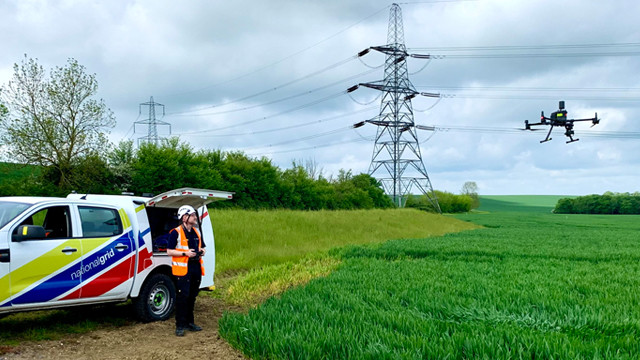The UK National Grid says it is working with the Civil Aviation Authority to expand beyond visual line of sight (BVLOS) operations. To date, the National Grid has already completed several successful flights, conducting inspections out to 3km along a powerline at a test location.
“We’re constantly looking at new technologies to help us keep our network operating safely and efficiently,” the electricity and gas operator said on September 10. “Drones that use artificial intelligence (AI) offer us many options that could make our condition assessment operations even more efficient. As technology advances and we develop our skills to prove we can maintain flight safety, we’ll be granted permission to fly longer distances than the current regulations.”
The National Grid uses drones to monitor parts of its network that are more difficult or costly to reach. It also uses drones in substations to gain a bird’s-eye view of high-voltage components that would otherwise require costly power outages, scaffolding or cherry pickers to view. Helicopters have previously been used but these operations can present challenges.
“There are a number of instances where using a helicopter just isn’t feasible. They can’t get too close to built-up urban areas and in rural areas they can be disturbing to any livestock that’s in the vicinity. These no-go areas currently make up around 15-20 percent of our network.”
The National grid currently has a fleet of 10 DJI drones which can be equipped with various payloads, and a team of 16 people who are currently trained to operate the drones for inspections and maintenance on a part-time basis. The aim is to have a full-time drone team, with pilots operating across the network.
For more information




